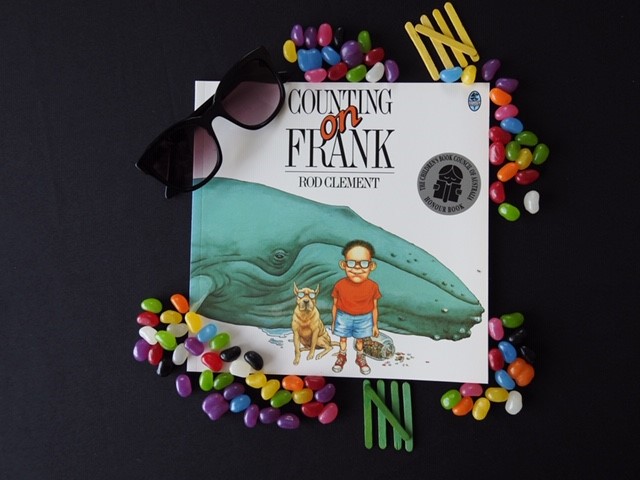Counting on Frank

By Rod Clement
I have had the absolute pleasure of collaborating with Bron Chalmers and Gerard Brick for several years now. They are both highly effective Learning Specialists at Forest St PS, with a passion for all things about learning and teaching. I am most appreciative of their willingness to create this edition for you!
I am sure you will agree with me that their teaching ideas are AWESOME!
Teaching Readers and Writers:
- Prior knowledge/connections- Frank really likes counting and thinking! Discuss and record the things that students in the class like to do.
- Investigate humour- What are the funny elements of this story?
- Choose a fact to investigate/complete an information report on- Whales, dogs, television, gum trees, Mosquitos
- Frank is very curious and likes to know facts. Collect a list of your own wonders and record them in a wonder journal!
- Write a list – What does Frank count/measure? Make a list of what you could count/measure in your classroom? What about in the whole world?
- Peas: Do you enjoy them? Why/why not?
- Write a letter from a disgruntled pea. Use ‘The Day the Crayons Quit’ as a mentor text
- What is your favourite vegetable and why?
- Create a list of likes and dislikes of the class and individual- Record these in your Writer’s Notebook.
- Could you invent a vegetable that is healthy but also tastes better than anything you have eaten before? What would you call it? Draw a picture.
- Frank wins a trip to Hawaii- Where would you like to win a trip to? Why?
- Frank really likes to use his brain for working out and numbers. What do you like to use your brain for? What are your ‘smarts’? ‘Brainstorm’ these things in a brain black line master
- Read the story ‘Just another Ordinary Day’ also by Rod Clement. Link below>
- What text to text connections can you make?
- Compare and contrast (perhaps using a Venn diagram) Frank and Amanda. Which character do you think you are more like? Why?
Teaching Mathematicians:
- Set up an estimation competition in your class with a jar of jelly beans or each student sets up their own estimation jar with blocks or other items for students to estimate
- Calculate how many cans of dog food are needed for Frank each year. Students to justify their answer and research how much this would cost per year / month / week.
- Investigate the phrase ‘times as big’ by creating a model that is three times as long or three times as big.
- Estimate how many peas in a pea packet. Calculate and model organising in tens and then ten, tens for hundreds.
- Relate the growing of the gum tree to growing a bean in class. Measure the bean stalk each week using uniform informal units for lower primary or a ruler for middle / upper primary. Graph the height each week using a line graph for upper primary or compare the heights of students’ plants in lower primary.
- Estimate, calculate and then justify how many students would fit inside your classroom.
Use thought provoking questions such as:
Do students stand or are they laying down?
Are we using just the floor area or filling all space?
Can we fit more in if we are all breathing out?
Students need to be able to justify their answer and use problem solving strategies such as solve a simpler problem (calculate how many students fit in a metre squared then apply this) as well as using personal and social skills to work with other students.
Link this to examples in the Guinness World Records where people have tried to fit a certain number of people in a car.
- Using some long rolls of paper, estimate and test how long of a line a marker could make before running out. Debate with the class the colour that might be used to complete this!
Check out this book on Booktopia
Enjoy and take care,
Andrea




Recent Comments